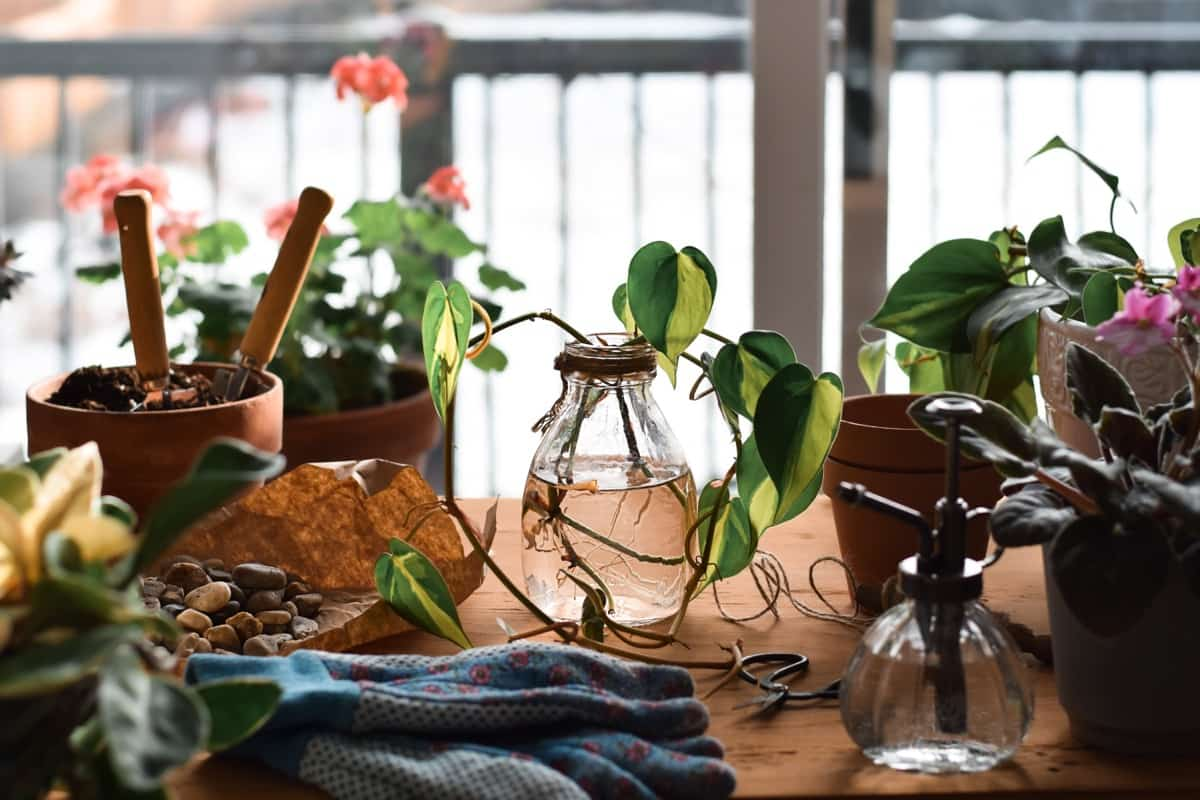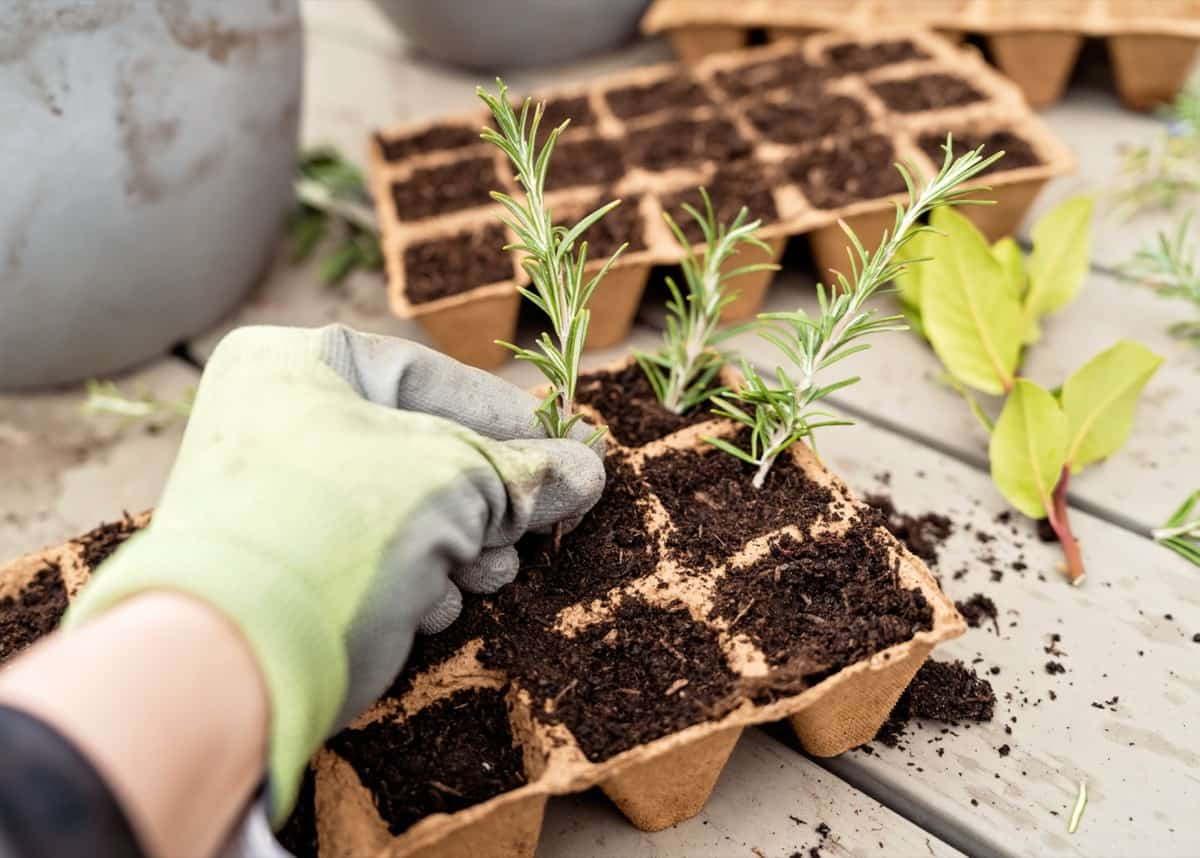Have you ever wondered how plants grow and thrive? One fascinating aspect of plant biology is the use of rooting hormones to stimulate growth. These hormones are crucial in promoting root development, increasing the survival rate of cuttings, and enhancing overall plant vigor. This article will explore the world of rooting hormones simply and engagingly.

We’ll discuss the different types of hormones, their benefits, and how to select and apply the right hormone for your plants. Get ready to uncover the secrets behind successful plant propagation and discover the wonders of using root hormones to unlock the full growth potential of your plants.
How to Boost Plant Propagation with Root Hormones
Definition and Significance of Plant Rooting Hormones
Plant rooting hormones are naturally occurring or synthetic substances that regulate and stimulate plant root development. They primarily contain plant hormones, including auxins, cytokinins, gibberellins, and ethylene. These hormones affect plant growth and development by influencing cell division, elongation, and root differentiation.
Rooting hormones are especially significant in plant propagation through cuttings, as they enhance new plants’ establishment and survival rate. Applying rooting hormones can result in accelerated root growth, improved stress resistance, and overall plant vigor, making them invaluable tools in horticulture and agriculture.
Types of Rooting Hormones
Rooting hormones support propagating plants from cuttings. They help initiate root growth, enhance root establishment, and ultimately contribute to the successful propagation of various plant species. Their application in horticulture and agriculture has proven to be a beneficial practice for growers and gardeners alike.
Auxins
- Auxins are a class of plant hormones responsible for promoting cell elongation and root initiation.
- Indole-3-butyric acid (IBA) and Indole-3-acetic acid (IAA) are common auxins used as rooting hormones.
- They stimulate the formation of adventitious roots in plant cuttings and promote overall root development.
Cytokinins
- Cytokinins are plant hormones that regulate cell division and differentiation.
- They work with auxins to promote root formation and stimulate plant growth.
- Trans-zeatin is a commonly used cytokinin in rooting hormone formulations.
Gibberellins
- Gibberellins are plant hormones involved in plant growth and development, including root elongation.
- They play a role in stimulating root growth and can be used as rooting hormones in certain plant species.
- Gibberellic acid (GA3) is a widely used gibberellin in rooting hormone applications.
Ethylene
- Ethylene is a gaseous hormone that regulates various physiological processes in plants, including root development.
- It promotes adventitious root formation and enhances the effectiveness of other rooting hormones.
- Ethylene is often used with auxins or as an additive to rooting hormone formulations.
Benefits of Using Root Hormones
Enhanced root development and establishment: Rooting hormones stimulate the formation of strong and healthy root systems, leading to improved nutrient absorption and water uptake. They enhance the establishment of new plants by promoting root growth in cuttings and ensuring successful transplantation.
The Increased survival rate of Cuttings: Rooting hormones improve the chances of survival for plant cuttings by stimulating root growth and reducing transplant shock. They provide a favorable environment for roots to develop, resulting in higher success rates when propagating plants.
Accelerated growth and overall plant vigor: By promoting root development, rooting hormones contribute to faster overall plant growth and establishment. They enhance plant vigor, leading to stronger stems, increased leaf production, and improved flowering or fruiting capabilities.
Stress reduction and improved resistance to environmental factors: Rooting hormones help plants cope with stressful conditions such as drought, transplanting, or nutrient deficiencies. They aid in developing robust root systems that can better withstand environmental challenges and promote plant resilience.
How to Apply Root Hormones
Using rooting hormones when propagating plants through stem cuttings significantly increases the chances of successful rooting. Rooting hormones expedite root development, resulting in quicker and higher-quality root formation. While some plants root easily on their own, rooting hormones make the propagation of challenging plants more feasible. Although certain plants like ivy can form roots in water, the roots produced in soil using rooting hormones are generally stronger.
Rooting hormones are available in powdered form, which is the most convenient to use and can be purchased from online garden sites or local garden supply stores. By following the proper application methods and providing appropriate care, rooting hormones simplify rooting difficult plants, improving overall success rates in plant propagation. This technique is highly valuable for gardeners and plant enthusiasts seeking to expand their plant collections or share plants with others.
In case you missed it: Greenhouse AI Agriculture: Get a Boost for Improving Productivity and Profitability

How Much Rooting Hormone to Use?
Determining the appropriate amount of rooting hormone is a common question among horticulturists. The answer could be more straightforward and depends on various factors, primarily the propagated plant material. Rooting hormones have specific plant formulations like poinsettias, pansies, petunias, geraniums, and more.
When working with woody plants or perennials, it can be beneficial to layer them in their pots before rooting to prevent root circling. However, there are exceptions to this practice. If you’ve experienced rooting difficulties or are working with challenging plant material, rooting hormones can aid in improving rooting success rates.
Using Rooting Hormone on a Stem Cutting
- Cut fresh, healthy stem cutting from a robust and healthy parent plant with a clean knife or shears. Make sure the developing tip of the cutting is between three and eight inches long.
- Remove the top several inches of stem near a node, which is a little swollen knob on the stem. Remove any flowers or foliage from the node area.
- Moisten the cutting’s bottom few inches to help the rooting hormone adhere to it.
- Dip or roll the bottom several inches of the cutting into the rooting hormone in a separate clean container. Avoid directly dipping the cutting into the original rooting hormone container. Tap the cutter lightly on the container’s edge to remove any excess powder.
- Plant the cutting in a soilless potting media, forming a large enough hole with a pencil or similar utensil to prevent the rooting hormone from rubbing off during the planting process.
- Tamp down the dirt surrounding the cutting firmly to remove any air pockets. Using a spray bottle, lightly hydrate the cutting and keep it warm at 60 degrees Fahrenheit or above.
- Keep the cutting away from direct sunlight since root systems grow best under indirect light.
Leaf Cuttings Stimulate Growth by Rooting Hormone
- For plants without stems, like succulents, leaf cuttings can be used for propagation. Apply rooting hormone to the part of the leaf closest to the plant’s center and cover it with a soilless potting mix. Partially insert the leaf into the mix.
- If the leaf has short stem-like African violet, place it in the rooting hormone and plant it in potting soil by sinking it up to the leaf.
- In some cases, cover the backside of the leaves with rooting hormone, place them on a moist soil mix, and lightly press down until the leaf touches the medium.
- Keep rooting plants away from direct sunlight until they establish a strong root system.
- Root cuttings involve using pieces of a parent plant’s root to produce new plants. Fall is the ideal time for taking root cuttings as they have the winter to develop before spring.
- Remove soil from the parent plant’s root area.
- Cut 2-inch pieces of slender roots and re-cover the parent plant’s root area.
- Roll the root cuttings in rooting hormone and plant them shallowly in potting medium.
- Keep the medium moist but not overly wet.
Tips for Maximizing Rooting Success by Plant Rooting Hormones
- Choose the right hormone formulation and concentration based on the plant species and type of cutting.
- Ensure the cutting is healthy and taken from a vigorous parent plant.
- Follow proper application techniques, such as moistening the cutting before applying the hormone and avoiding contamination.
- Provide optimal environmental conditions, including appropriate moisture levels, temperature, and light conditions.
In case you missed it: Best and Latest Pesticides for Rice/Paddy to Control Insect Pests and Diseases For Better Profits

Conclusion
Plant rooting hormones can significantly enhance the success of propagating plants through stem or leaf cuttings. You can stimulate robust root growth and achieve successful plant propagation by selecting the right hormone, applying it properly, and providing optimal conditions.
- Feed Your Flock for Less: Top 10 Tips to Save on Chicken Feed
- Ultimate Guide to Ossabaw Island Hog: Breeding, Raising, Diet, and Care
- Hatching Answers: The Top 10 Reasons Your Chickens Aren’t Laying Eggs
- Eggs and Economics: Breaking Down the Cost of Raising Backyard Chickens
- Defend Your Greens: Proven Methods to Keep Iguanas Out of Your Garden
- Ultimate Guide to Cinnamon Queen Chicken: A Comprehensive Guide for Beginners
- Ultimate Guide to California Tan Chicken: Breeding, Raising, Diet, Egg-Production and Care
- Ultimate Guide to Marsh Daisy Chicken: Breeding, Raising, Diet, and Care
- 10 Types of Chicken Farming Businesses You Can Start for Profits